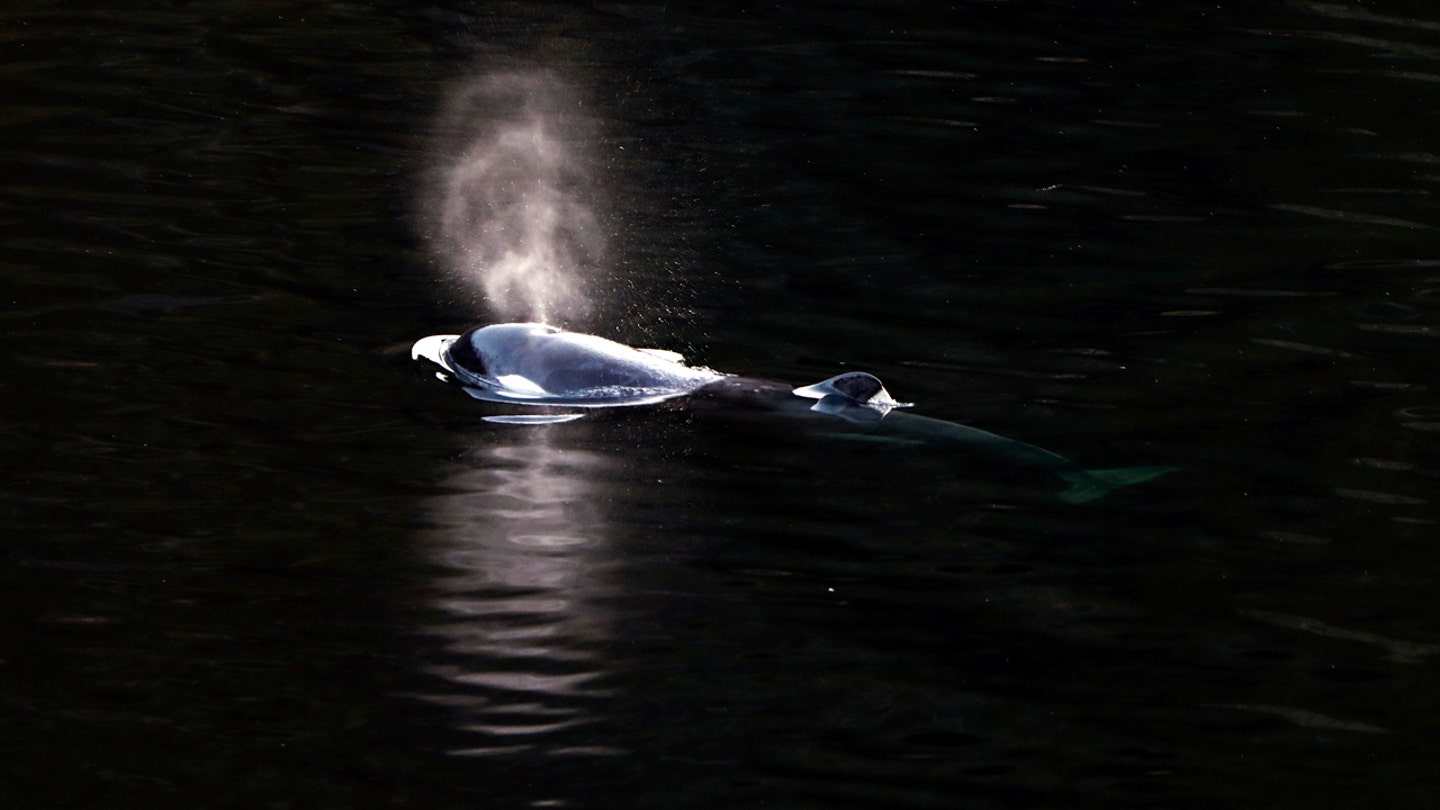A 2-year-old orca calf trapped for over a month in a lagoon on Vancouver Island has finally escaped its confinement. The young whale swam past a bottleneck at high tide on Friday, reaching an inlet that could lead it to the open sea, officials said. The calf's mother had previously died when it became stranded at low tide.

A young killer whale that was trapped for more than a month in a lagoon on Vancouver Island has finally found its way to freedom. The calf, who is about two years old, swam past a bottleneck at high tide early Friday, reaching an inlet that could take it to the open sea, officials said.

The Ehattesaht and Nuchatlaht First Nations said in a statement that a team monitoring the calf saw it swim past the area where its mother had died, pass under a bridge and head down the inlet "all on her own."
The calf had been stuck in the tidal lagoon near the British Columbia village of Zeballos about 450 kilometers (280 miles) northwest of Victoria since March 23, when its pregnant mother became trapped at low tide and died on a rocky beach.
Officials said they hoped that once the whale reaches the open sea, it calls will be heard by its orca family.
"Today the community of Zeballos and people everywhere are waking up to some incredible news and what can only be described as pride for strength this little orca has shown," Chief Simon John said in a release.
Officials said they were putting protective measures in place to ensure the whale has no contact with people or boats.
"Every opportunity needs to be afforded to have her back with her family with as little human interaction as possible," he said.
An attempt in mid-April to free the whale involved using a net to corral her into a large fabric sling in shallow waters. The whale managed to dodge a 50-person rescue team that was using boats, divers and sophisticated underwater detection equipment.
In another effort, a woman tried to coax the whale out of the lagoon by playing her violin during high tide.
The calf's escape is a major triumph for conservationists and wildlife officials, who have been working tirelessly to save the animal. It is a testament to the resilience of these magnificent creatures and the importance of protecting their habitat.
The calf's journey is not over yet, as it still must leave the Little Espinosa Inlet to reach open ocean. But with the support of the Ehattesaht and Nuchatlaht First Nations and other conservation groups, it is hoped that the calf will soon be reunited with its family.










